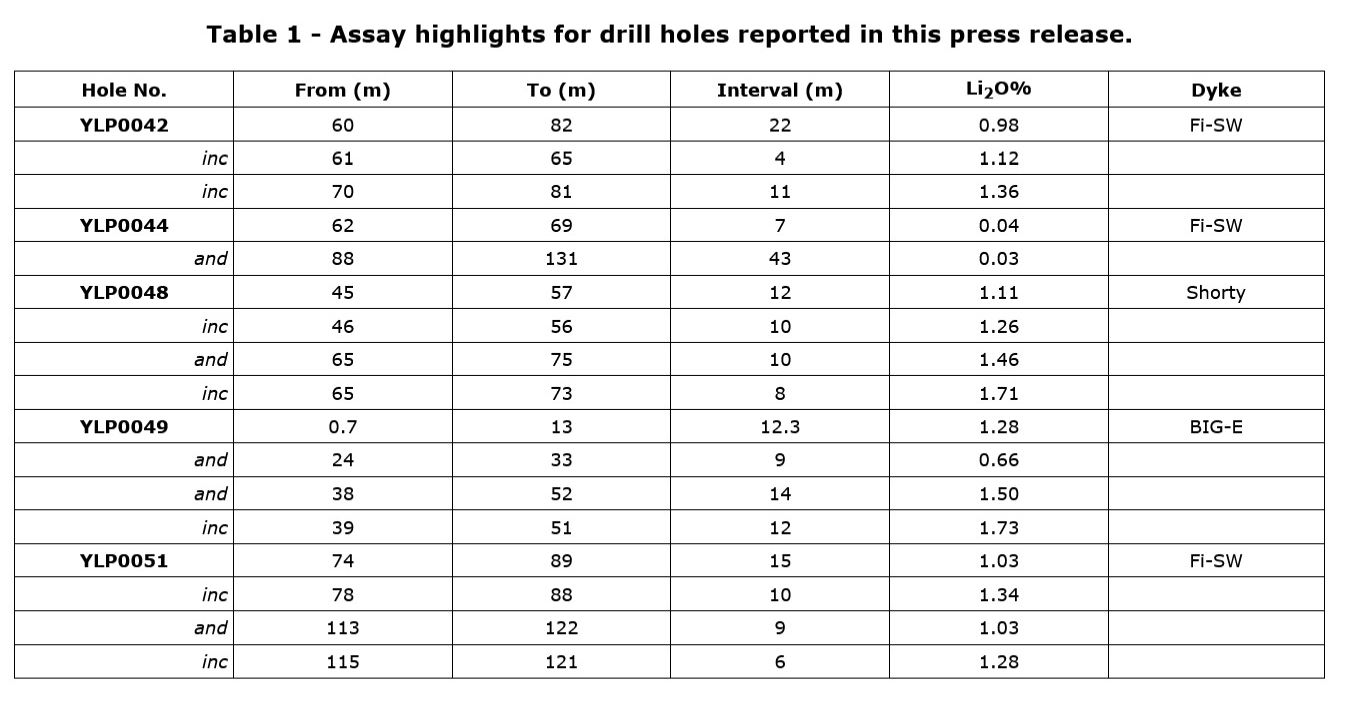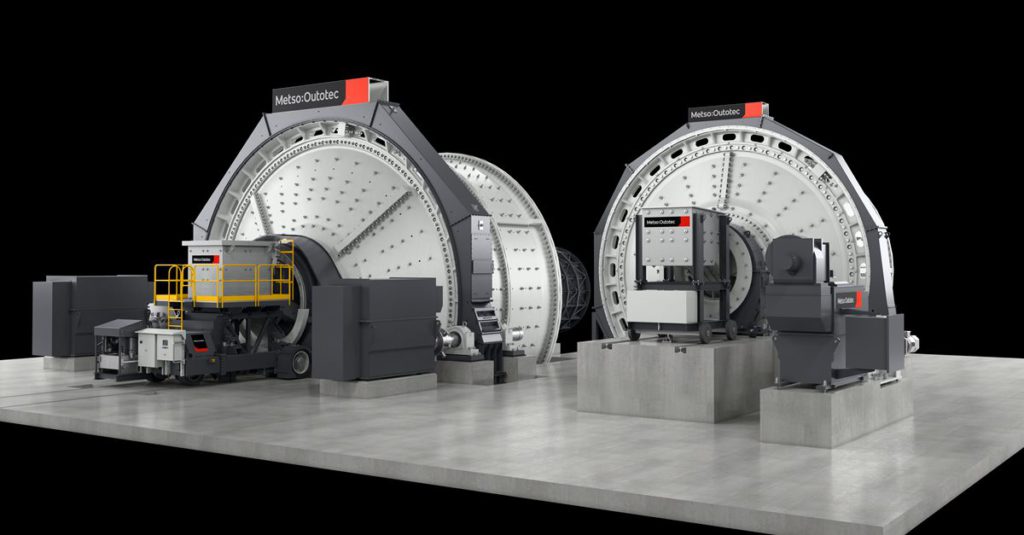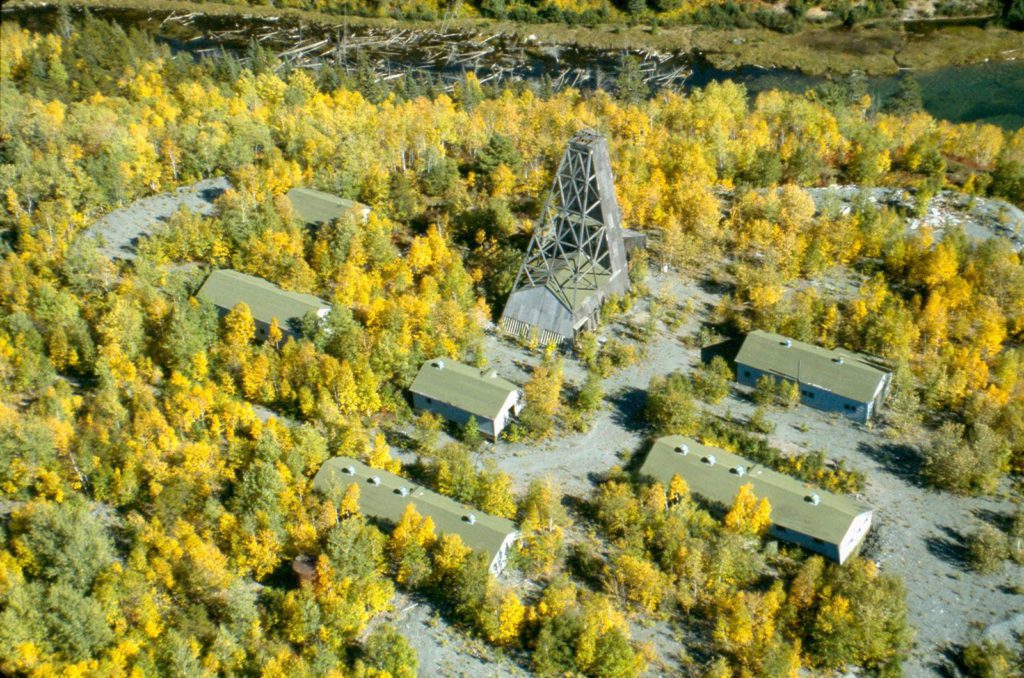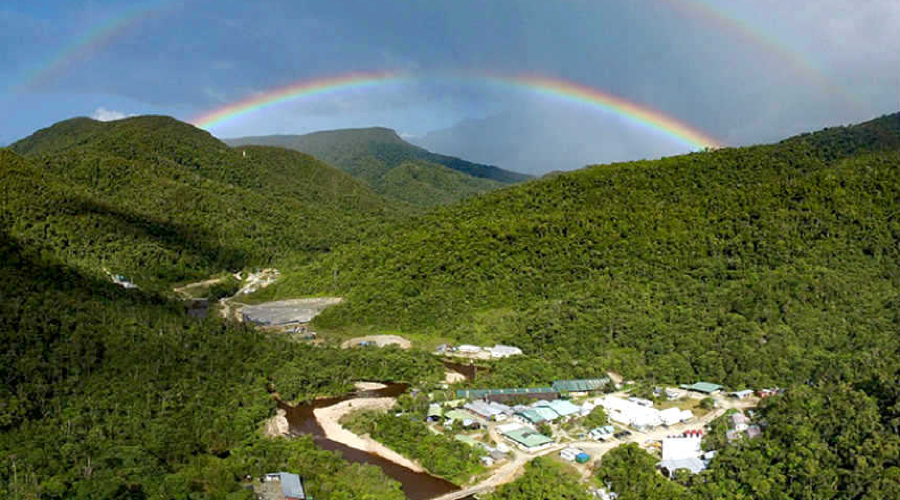Mining
Wednesday, October 4th, 2023 3:22 pm EDT
Li-FT Power Ltd. has released assays from five drill holes completed at the Fi Southwest, Shorty and BIG East pegmatites within the Yellowknife lithium project (YLP) located outside the city of Yellowknife, NWT. Drilling has intersected significant intervals of spodumene mineralization, with the following highlights:
Highlights: YLP0049: 14 m at 1.50% Li2O, including 12 m at 1.73% Li2O, (BIG East)and: 9 m at 0.66% Li2O,and: 12.3 m at 1.28% Li2O.YLP0048: 12 m at 1.11% Li2O, including 10 m at 1.23% Li2O (Shorty)and: 10 m at 1.46% Li2O, including 8 m at 1.71 % Li2O.YLP0051: 15 m at 1.03% Li2O, including 10 m at 1.34% Li2O and (Fi SW)and: 9 m at 1.03% Li2O, including 6 m at 1.28% Li2O.
Francis MacDonald, CEO of LIFT, comments, “We continue to be impressed with the amount of spodumene pegmatite being intersected at depth at BIG East. The pegmatite dyke system is much larger than we anticipated based on the surface expression. YLP0049 intersected more than 35 meters of pegmatite with an aggregate grade of 1.20% Li2O.
“At Fi Southwest, we have constrained the southwestern portion of spodumene within the pegmatite dyke, but also we have opened up a new zone towards the northeast with YLP0051 that intersected two zones for a total width of 24 meters. We believe mineralization is plunging towards the northeast, which opens up an exciting new area to be drilled in the future which has little to no spodumene pegmatite on surface.”
Discussion of Drill Results
Drill hole YLP0042 intercepted 22 metres of 0.98% Li2O from 60 metres. The hole is located near the north end of Fi Southwest dyke. Hole YLP0051, also located at the north end of outcropping Fi Southwest dyke, intercepted 15 metres of 1.03% Li2O from 74 metres, including 10 metes of 1.34% Li2O from 78 metres, as well as 9 metres of 1.03% Li2O in a second dyke from 113 metres, including 6 metres of 1.28% Li2O from 115 metes. Hole YLP0044, collared near the southern terminus of Fi Southwest exposure intersected two intervals of pegmatite for 7 metres from 62 metres and 43 metres from 88 metres that averaged 0.04% Li2O and 0.03% Li2O, respectively (Table 1 and Figures 2 and 3).
Hole YLP0048 was collared in the center of the Shorty pegmatite dyke where it intersected three intervals of the Shorty pegmatite dyke, two of which were spodumene-bearing. The hole intercepted 12 metres of 1.11% Li2O from 45 metres, including 10 metres of 1.26% Li2O from 46 metres, and 10 metres of 1.46% Li2O from 65 metres, including 8 metres of 1.71% Li2O from 65 metres (Table 1 and Figures 4 and 5).
The BIG East pegmatite was tested by hole YLP0049, which also had three pegmatite intervals. The hole collared in pegmatite at 0.7 metres for 12.3 metres of 1.28% Li2O, and 9 metres of 0.66% Li2O from 24 metres, as well as 14 metres of 1.50% Li2O from 38 metres, including 12 metres of 1.73% Li2O from 39 metres (Table 1, Figures 6 and 7).
Spodumene is the primary lithium mineral constituent of the dykes and occurs with varying amounts of quartz, feldspar, and muscovite. All the dykes are in amphibolite-grade Burwash Formation metasediments.
Drilling Progress Update
Currently, LIFT has reported results from 50 drill holes (8,812 meters). To date, 139 diamond drill holes have been completed (24,500 meters). Figure 1 – Location of LIFT’s Yellowknife Lithium Project. Drilling is focused on the Road Access Group of pegmatites which are located to the east of the city of Yellowknife along a government-maintained paved highway, as well as the Echo target in the Further Afield Group.


QA/QC and Core Sampling Protocols
All drill core samples were collected under the supervision of LIFT employees and contractors. Drill core was transported from the drill platform to the logging facility where it was logged, photographed, and split by diamond saw prior to being sampled. Samples were then bagged, and blanks and certified reference materials were inserted at regular intervals. Field duplicates consisting of quarter-cut core samples were also included in the sample runs. Groups of samples were placed in large bags, sealed with numbered tags in order to maintain a chain-of-custody, and transported from LIFT’s core logging facility to ALS Labs (“ALS”) laboratory in Yellowknife, Northwest Territories.
Sample preparation and analytical work for this drill program were carried out by ALS. Samples were prepared for analysis according to ALS method CRU31: individual samples were crushed to 70% passing through 2 mm (10 mesh) screen; a 1,000 gram sub-sample was riffle split (SPL-21) and then pulverized (PUL-32) such that 85% passed through 75 micron (200 mesh) screen. A 0.2 gram sub-sample of the pulverized material was then dissolved in a sodium peroxide solution and analysed for lithium according to ALS method ME-ICP82b. Another 0.2 gram sub-sample of the pulverized material was analysed for 53 elements according to ALS method ME-MS89L. All results passed the QA/QC screening at the lab, all inserted standards and blanks returned results that were within acceptable limits.
Qualified Person
The disclosure in this news release of scientific and technical information regarding LIFT’s mineral properties has been reviewed and approved by Carl Verley, P.Geo., Vice-President, Exploration of LIFT and a Qualified Person as defined by National Instrument 43-101 Standards of Disclosure for Mineral Projects (NI 43-101).
About LIFT
LIFT is a mineral exploration company engaged in the acquisition, exploration, and development of lithium pegmatite projects located in Canada. The Company’s flagship project is the Yellowknife Lithium Project located in Northwest Territories, Canada. LIFT also holds three early-stage exploration properties in Quebec, Canada with excellent potential for the discovery of buried lithium pegmatites, as well as the Cali Project in Northwest Territories within the Little Nahanni Pegmatite Group.
We seek Safe Harbor.




